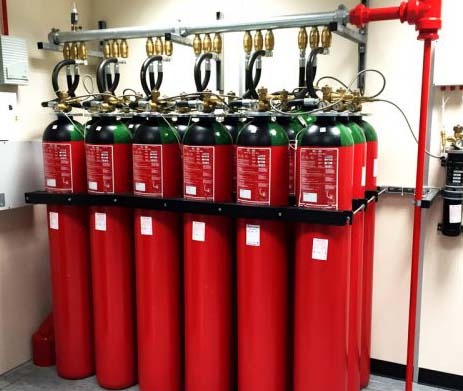You Have 1 Item in your Cart. Price is $199
You Have 1 Item in your Cart. Price is $199
A fire suppression system is any product designed to stop a fire from spreading. It gets the name suppression system as it aims to hold back the fire and the damage it may cause. Preventing the fire from spreading mitigates losses and allows time for emergency personnel to respond. One example of a fire suppression system is a fire sprinkler system. Clean agent and dry chemical systems, like those offered by Firetrace also qualify as fire suppression systems.
While sprinkler systems are the most common type of fire suppression system, some applications require special hazard fire suppression systems that do not use water. These systems are unique in that they can deal with hazards where water could actually do more harm than good. Within fire science, there are several classes of fires: class A, B, C, D, and K. The fuel of the fire will dictate what can put it out. Class A fires, for example, involve wood, and a sprinkler system would work well. A Class C fire, on the other hand, is an electrical fire and that may get worse by trying to suppress it with water. In summary, the specific environment will determine which system will work best.

Engineered vs. pre-engineered fire suppression systems also need discussion. Engineered fire suppression systems will protect an entire room. Firetrace, for example, uses clean agents that are safe with electronics and can be inhaled without doing any harm to a person.
Pre-engineered systems are used to protect small compartments or micro-environments. Engine compartments and electrical panels are good examples of where these types of systems would provide protection. They are also useful for suppressing fires in CNC and EDM machines.
Titus Gold pre-engineered fire suppression systems are available in two configurations: indirect release and direct release. Watch the video below to learn about the two different Firetrace pre-engineered fire suppression system
Non-electric detection systems, including the Firetrace pre-engineered system, utilize pneumatic detection tubing that can be installed inside and throughout hazards. Since heat rises, it works to trigger the pneumatic detection tube. If the heat or fire comes in contact with the tube, the tubing will burst open at the point of contact. It causes a pressure change in the entire system and will tell the system to discharge its fire suppression agents. Agents you can use with these systems include carbon dioxide, dry chemicals, clean agents and foam suppressants.

If you have an emergency any fire system services, simply call our 24 hour Titus Gold
© 2021 All rights reserved by Titus Gold
Designed by Webmirchi.com